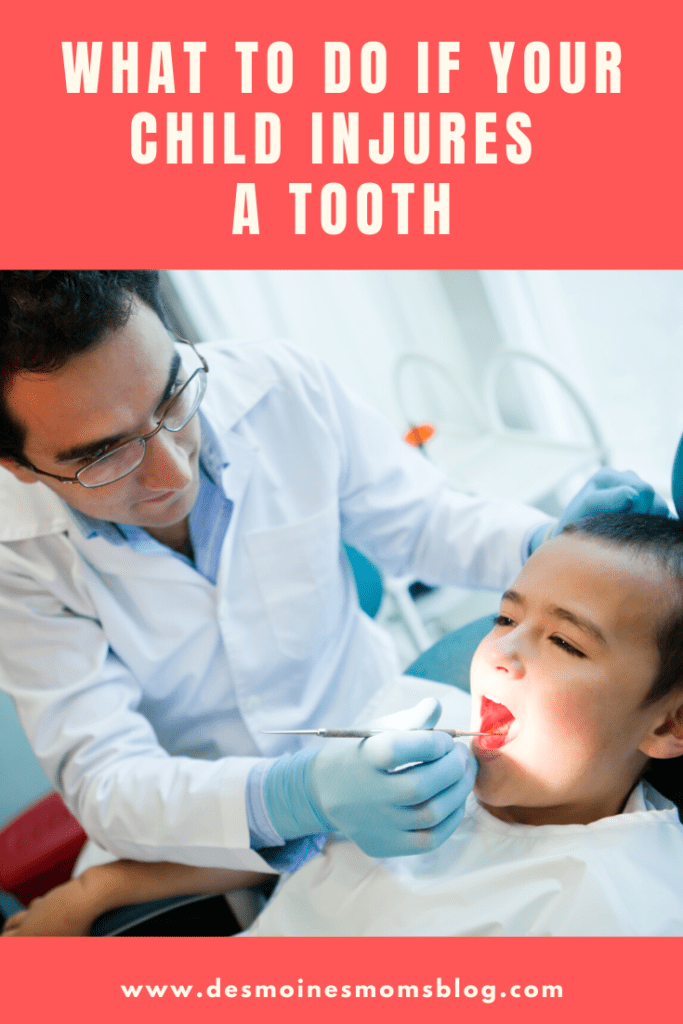 Dental trauma is common in children and adolescents because this is the time when kids learn to walk, run, and are most active in sports. If your kid has a tooth injury, it’s important you know what to do.
Dental trauma is common in children and adolescents because this is the time when kids learn to walk, run, and are most active in sports. If your kid has a tooth injury, it’s important you know what to do.
Dr. Waage with Walnut Hills Pediatric Dentistry answers questions about what to do if your child injures a tooth.
What is a dental emergency?
A dental emergency can be any traumatic injury to the mouth that results in significant bleeding. The first thing I tell parents is that in the event of any dental issue, emergency or not, they can always call their pediatric dentist.
If there is bleeding, significant pain, swelling, or fever – or simply doubt about whether or not their child needs immediate treatment – just pick up the phone.
In today’s smartphone-enabled world, we’ll often ask parents to take a picture of the injury and text it to us. That way, we can determine the extent of the damage and answer any questions they have.
What if a permanent tooth is knocked out? Can it be saved?
When a child has lost a tooth due to trauma, parents and teachers must know what to do. This can help save permanent teeth but also keep the kids from getting traumatized by the situation and its consequences.
If a primary (also called baby) tooth is knocked out it is treated differently than a permanent tooth that is knocked out. Front primary teeth are expected to come out around the age of six or seven to give way to permanent ones.
It is not recommended to reimplant (or put back in the socket) a baby tooth if it’s knocked out. This is because it can affect the natural growth of the permanent teeth or the surrounding tissues.
Here’s what to do if a primary tooth is knocked out. Assess the child, contain any possible bleeding, and calm the injured patient. Even if you believe no other injury was sustained, it is important to take the child to the pediatric dentist to be assessed. The injury may have affected other teeth, gums, or bone.
If a permanent tooth is knocked out, this is a serious dental emergency. Reimplantation is an immediate concern. If this happens to your child, call the dentist at once to receive instructions. If your dentist cannot be immediately reached, you can do the first aid yourself.
- The first thing that you should do is to calm the injured child.
- Look for the tooth and pick it up by the crown, do not touch the root.
- If dirty, wash the tooth under cold running water for ten seconds; again, make sure that you protect the root.
- Reposition the tooth in the mouth, cover it with clean gauze or handkerchief and instruct the child to bite it to hold it in place. If the child cannot do this, place the tooth in a glass of saline solution or a glass of milk or better yet in a container with saliva.
- Don’t store the tooth in water.
- And most importantly, the less time the tooth is out of place, the better the outcome and best chance of reattachment.
When you have secured the permanent tooth, go to the dentist at once. The dentist will then assess the injury and reimplant the tooth immediately. A “splint” or temporary braces will secure the tooth. The patient will be instructed to avoid participating in contact sports, go on a soft diet for at least two weeks, use a soft toothbrush after every meal, and rinse the mouth with chlorhexidine twice a day for one week.
The patient is also required for follow-up treatments depending on the diagnosis of the dentist. Dr. Waage and Dr. Leonard will also send the patient to an endodontist or root canal specialist. Avulsed teeth will most likely need a future root canal for survival.
What should I do if a tooth is chipped or broken?
For an injury that has resulted in a chipped front tooth – baby or permanent – rinse the child’s mouth with water if there is bleeding and apply a cold compress to the lip to minimize bleeding and reduce swelling. Save any tooth fragments you’re able to find and bring them with you to the pediatric dentist.
If the chipped tooth was a permanent front tooth, the broken fragment (which should be kept in water) might be bonded in place for the most ideal cosmetic repair. If the tooth fragment can’t be found, there are other cosmetic bonding options.
What should I do if a child bumps a tooth and it is bleeding, but still connected?
In this situation, whether the tooth is primary, or permanent, it is best to contact your dentist and ask them for further instruction. A lot of times the injury may seem minor, but there could be underlying problems unseen without x-ray or office examination. It can be very helpful to give your dentist the background details of the injury and let them instruct you on the next move.
Is it best to call the dentist or go to urgent care when you have a tooth injury?
When an isolated tooth injury occurs, it is typically better to have communication or contact with your home dentist, as they will have greater access to the information and tools necessary to diagnose and treat the dental injury and prevent further damage to involved areas. Urgent care is appropriate if there are traumatic injuries involving the head, neck, or face in addition to the teeth.
Dental emergencies can be scary. Acting quickly can potentially save a tooth, prevent infection, and reduce the need for extensive dental treatment down the road. Don’t hesitate to call your pediatric dentist if you don’t know what to do. A child with a healthy mouth will have an easier time eating, speaking, sleeping, playing, going to school, paying attention in class.
If a child is in sports, do you recommend they use a mouthguard? Is this something they can get from your office?
All sporting activities have an associated risk of orofacial injuries. They occur from falls, collisions, contact with hard surfaces, and contact from sports-related equipment. Reduce dental and facial injuries with mandatory protective equipment. Since most of our patients have a combination of permanent and primary-baby teeth, Mouth-formed, also known as boil-and-bite, mouthguards are the most commonly recommended. These mouthguards are made from a thermoplastic material. It is adapted to the mouth by finger, tongue, and biting pressure after immersing the appliance in hot water. Find them at department and sporting-goods stores as well as online. These are the most commonly used among athletes but vary greatly in protection, retention, comfort, and cost.
Connect with Walnut Hills Pediatric Dentistry
64 E. Hickman Rd, Waukee
515-987-1155



















This is one of the common issues in children nowadays.
An appropriate diagnosis and a timely response will improve outcomes when managing traumatic dental injuries In many cases of traumatic dental injuries, the timeliness of care is key to saving the tooth.
I would personally recommend a regular dental check-up for heathier smile.